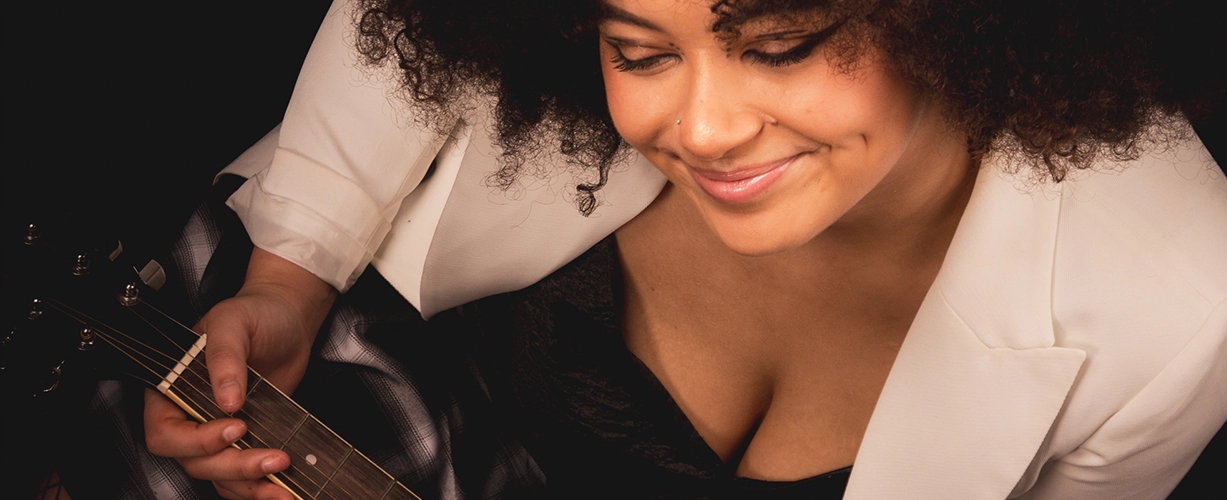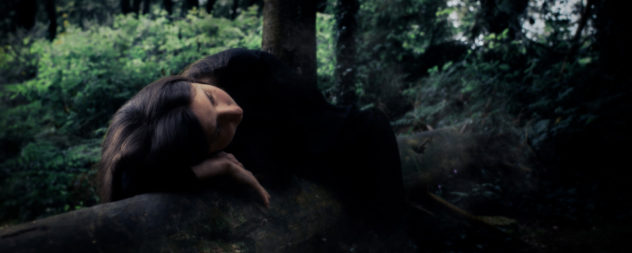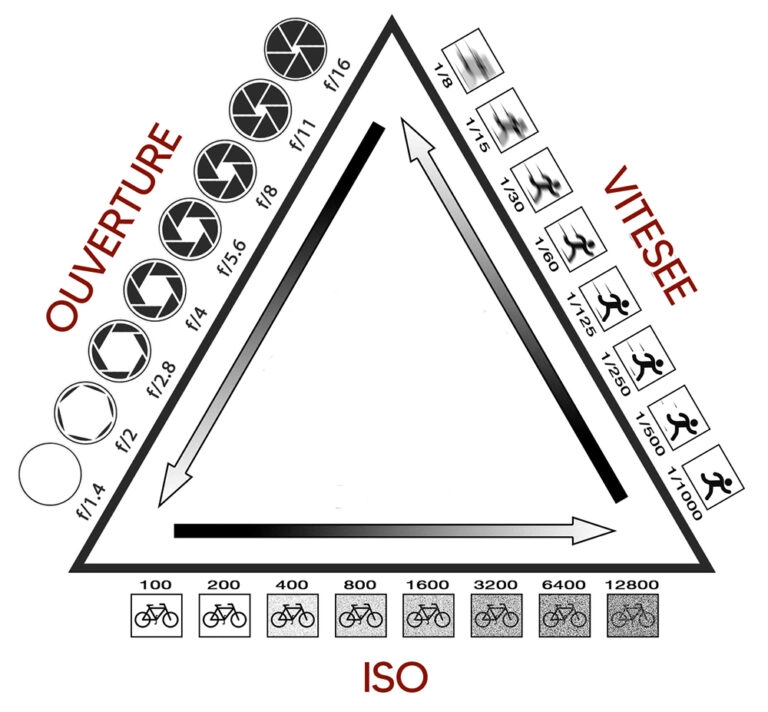Exposure triangle

The exposure triangle is made up of three main elements: aperture, shutter speed and ISO. It’s a rather barbaric name for the important elements that you need to set up, adjust and control during your photo shoot.
A short definition of the exposure triangle
The correct exposure of a photo depends on three main elements.
- The aperture of a camera lens is a hole that regulates the amount of light that passes through the film or sensor. The larger the aperture, the more light enters the lens.
- The shutter speed is the length of time the film or digital sensor inside the camera is exposed to light. The longer the exposure time, the more light reaches the sensor.
- ISO is simply a camera setting that allows you to brighten or darken a photo. As you increase the ISO value, your photos become progressively brighter. The more sensitive the sensor, the more light it absorbs.
These three elements make up the exposure triangle. Each element is linked to the others.
The exposure triangle explained
Aperture and depth of field
The aperture is the amount of light your camera lens can receive through its iris system. The curtain controls the opening and closing of the iris, and therefore the amount of light that reaches the sensor.
The unit of measurement for aperture is ‘f/’. The smaller the number, the larger the aperture. For example, at f/1.8, the aperture is very large, letting in a lot of light. Conversely, at f/22, the aperture is very small. In fact, the diaphragm works like an eye.
Depth of field is the ‘sharp’ area that extends in front of and behind the plane where the camera is in focus. In general, focus is on the object/subject of the photograph. Anything outside this area will be out of focus. The same applies to the background. The blur can produce a nice bokeh.
If you want to reduce the depth of field to obtain a blurred background, you need to pay attention to three things:
- Bring the subject closer to the camera
- Open the diaphragm as wide as possible
- Use longer focal lengths.
On the other hand, if you want to increase the depth of field, you need to:
- Close the diaphragm
- Possibly move away from the subject and change the focal length to a wider angle…
Shutter speed
The shutter speed is the time during which the window opens when the camera’s release button is clicked. The window open time is the time during which the camera sensor is exposed to light.
The choice of shutter speed depends on a number of factors, such as the speed of the subject, stability (with or without a tripod) and the photo required. Shutter speed is expressed in seconds and fractions of a second. Without a tripod, you need to keep to fast shutter speeds, and not go below 1/25s, otherwise your photograph will be blurred by a lack of stability. This can be a choice ^^. If our camera is stable, exposure times can be lengthened to make a ‘slower’ photo, such as: 1s, 2s, 3s… The longer the aperture time, the more light penetrates the sensor.
To choose the best shutter speed, you can ask yourself 3 simple questions:
- What is the shutter speed of my subject? A moving cat will need speed, whereas a vase with flowers is unlikely to move.
- What is my set-up? If I’ve put my camera on a tripod, if I’ve got a remote control or if I’ve got my camera in my hand…
- How much light will I let in and is it necessary for my photo?

ISO and sensitivity
ISO is a fundamental parameter in photography that determines your sensor’s sensitivity to light. In simple terms, the higher the ISO value, the more sensitive your sensor will be to light.
Think of ISO as a light switch in a camera. The higher you increase the ISO, the more light you turn on inside your camera. This allows your sensor, which is a bit like an electronic eye, to ‘see’ more clearly, even in the dark. CAUTION: with ISO, you don’t add light, you add sensitivity.
The advantages and disadvantages of ISO :
Advantages:
- Allows you to photograph in low light conditions.
- Offers greater flexibility in the choice of exposure parameters.
Disadvantages:
- High ISO can introduce digital noise into the image, resulting in visible grain, especially in dark areas.
- Potentially degraded image quality if the ISO is set too high.
Photography exposure
Exposure is the amount of light received by the camera sensor when the picture is taken. This is known as the sensitivity of the sensor, or ISO sensitivity. On film cameras, this was the amount of light received by the film. If you do film photography, you can choose your film in terms of ISO depending on how you want to use it.
And as is often the case in photography, you can compare the way the sensor works to the way the eye works. Exposures can be divided into 3 categories:
- Overexposure: too much light received by the sensor. The photo will be too white.
- Good exposure: the most natural aspect of the photo. As seen by the eye.
- Under-exposure: insufficient light will make the photo dark.
Exposure is expressed in ISO, which generally ranges from ISO 100 to ISO 80000. The lower the ISO, the less light will be captured. Conversely, the higher the ISO, the more light will be captured. Note that in a dark environment, it may be easy to increase the ISO to capture more light, but this can lead to the appearance of ‘noise’ in the image, which can distort your photo.

Photography is all about balance and taste
The correct exposure according to the exposure triangle is not necessarily the most appropriate. For example:
- Underexposed: to work on shadows, to obtain a photograph with a dramatic edge.
- Over-exposed: to embellish a moment, to favour the underexposed parts of an image in post-production. Gives a more dreamlike quality.
It also depends on how sensitive you are to photography. I know that I tend to underexpose my photos. For me, photos that are too bright look too commercial. I think it’s a professional deformation related to my experience in a communications agency.

Comments are closed.